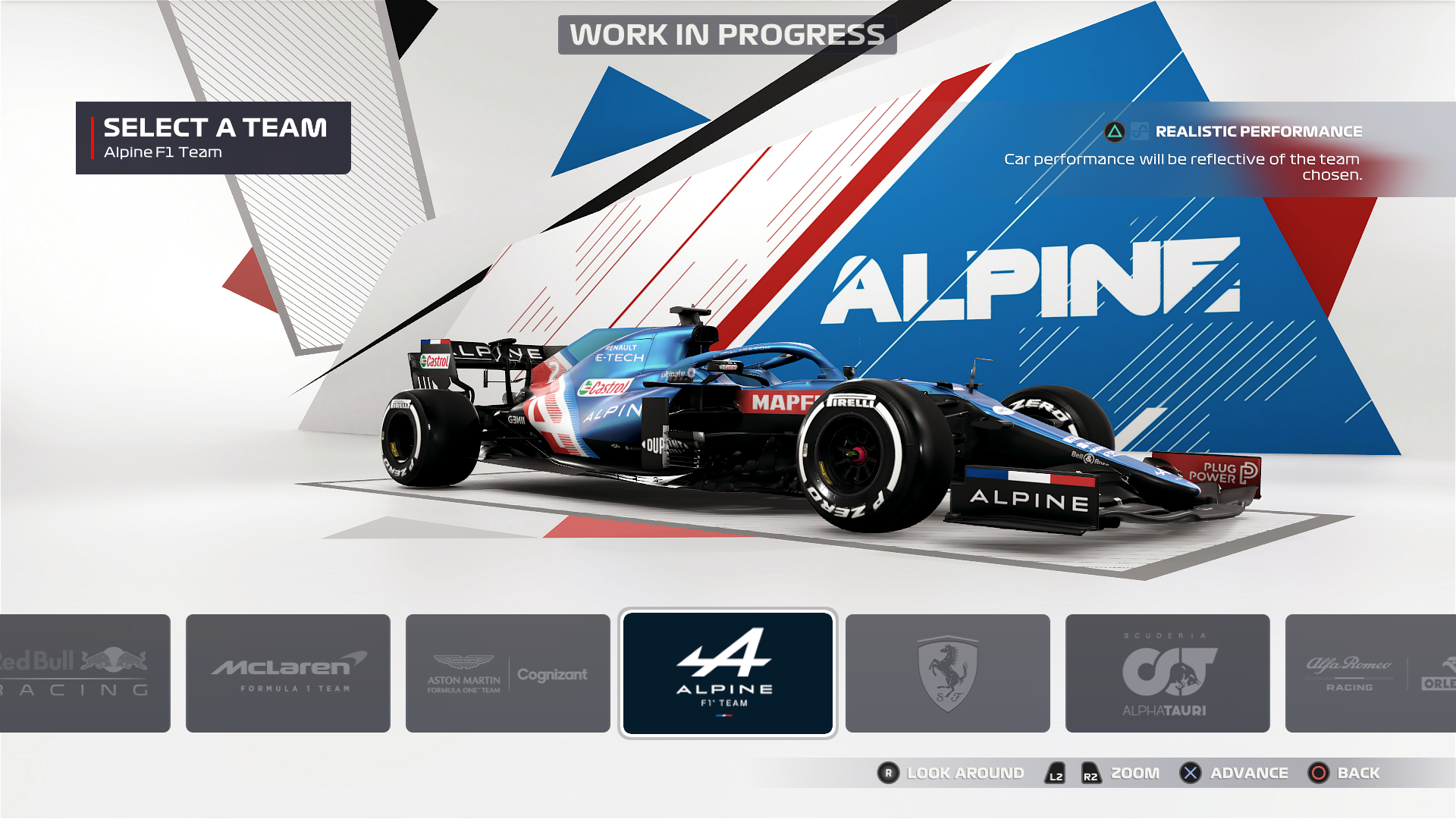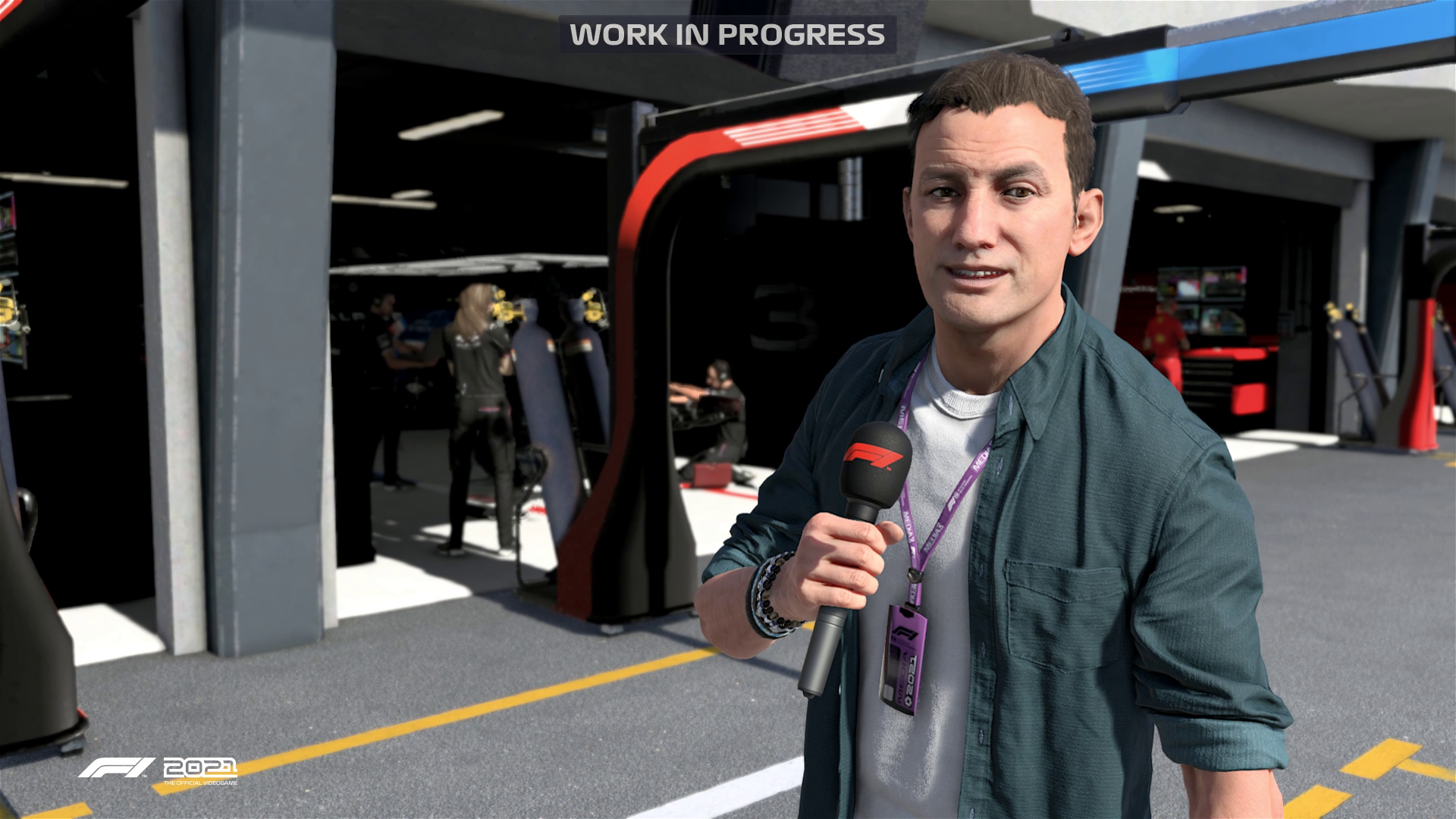Codemasters’ F1 series has already entered its own radical new era, of course, and there’s still that little moment of shock when the EA Sports splash screen appears on boot-up, but we’re on familiar ground here. Indeed, those who worried about how EA’s $1.2 billion acquisition of Codemasters might impact its flagship series will find plenty to reassure them here, just as those looking for a significant step forward might well be disappointed: upon first impressions this very much feels like a stopgap year for the F1 series.
Heading the charge when it comes to new features is the Braking Point story mode, leaning into the lurid drama that’s been key to Netflix series’ Drive to Survive’s success - and, of course, the lifeblood of F1 itself. There’s an expanded cast brought alive with new CG that’s not quite as unnerving as Codemasters’ in-game character models (these scenes have been outsourced, with the script from the same writing team as - I can’t quite get my head around this - wizard Derren Brown). It promises to run deeper - and longer - than its ultimately inconsequential debut back in 2019. What little there was back then was genuinely entertaining, so there’s some potential for this new fully fleshed out story.
Elsewhere there’s now the ability to play through the career mode with two players, teaming up or opposing one another as you dive into the team-building, R&D and various other management features that the series has steadily acquired in the years. There’s tweaks across the career mode, too, with more involved management in My Team, an improved practice structure with more refined objectives than before, expanded driver statistics and new beginner and experienced lobbies in multiplayer.
There is also, for the first time in the series and in an enjoyable lift from the likes of FIFA, a Real Season Start where you can pick up the action at any point and carry on from there - and with three of the tracks being added in as free post-launch DLC, it’ll give you the ability to play with the updated schedule in career mode as and when it arrives in-game. That Imola, Portimao and newcomer Jeddah are being implemented that way shows that F1 is still something of a moving target.
That Codemasters is able to get even close to the action we’ll see across 2021 remains a feat in itself, and of course this time out we’ll also get next-gen versions. There’s all the extras you’d imagine, from improved loading times to adaptive trigger use on PlayStation 5 (or on PC, where the feature is some way towards being implemented with a nice sense of weight to the throttle trigger). Raytracing, meanwhile, is available in replays and photo mode on next gen consoles (it looks to be available across the board should you have the requisite PC).
They’re small, granular upgrades, in a sport that’s all about such detail - and in a season where that kind of detail is what makes the difference between the likes of Red Bull and Mercedes. The gentlest of iterations has helped provide the recipe for one of the best F1 seasons in recent memory, though of course that’s not an approach that will necessarily work so well when it comes to the sport’s video game counterpart. I’m not sure this entry will go down as one of the all-time greats, but if there’s enough meat to its newly emboldened story mode I’m sure it’s got a chance to be plenty decent.


